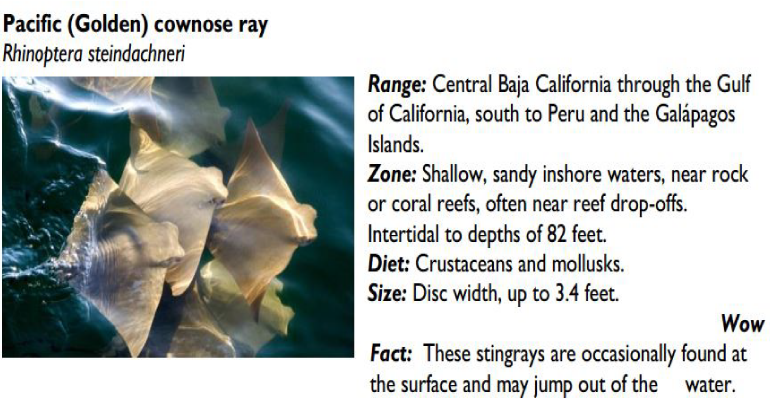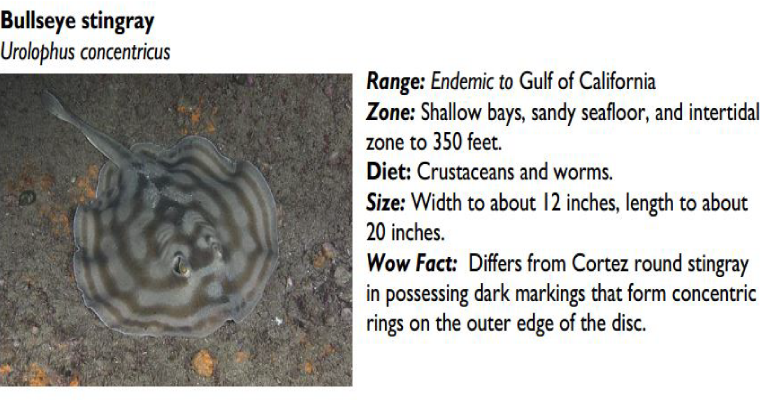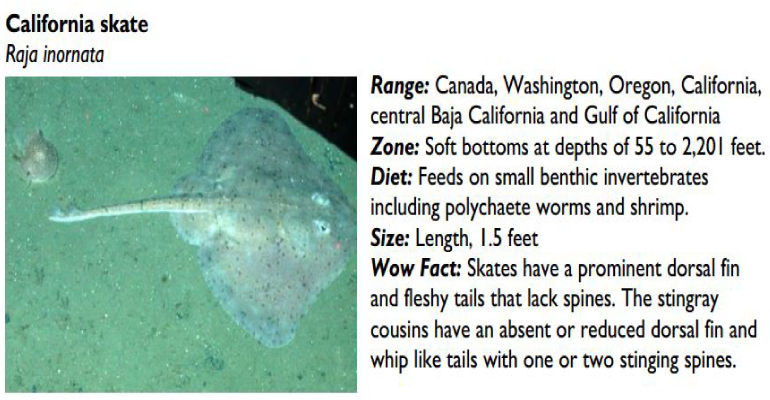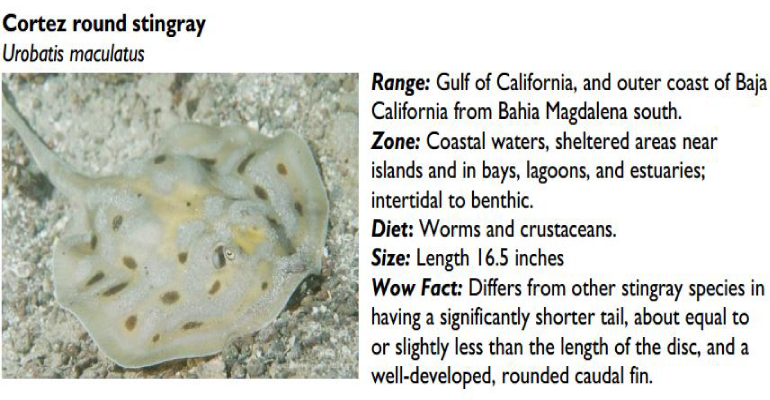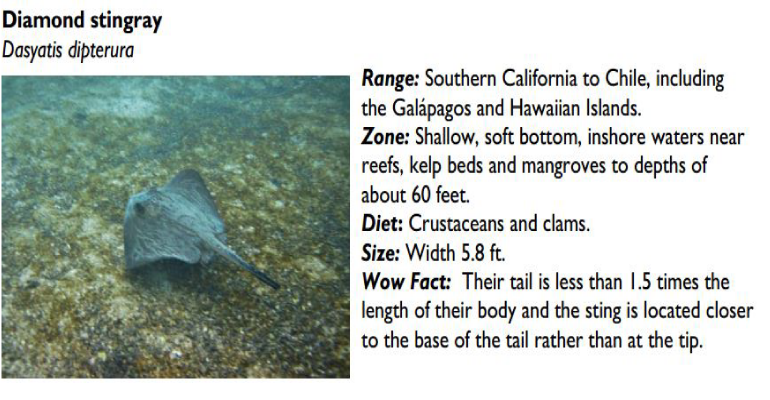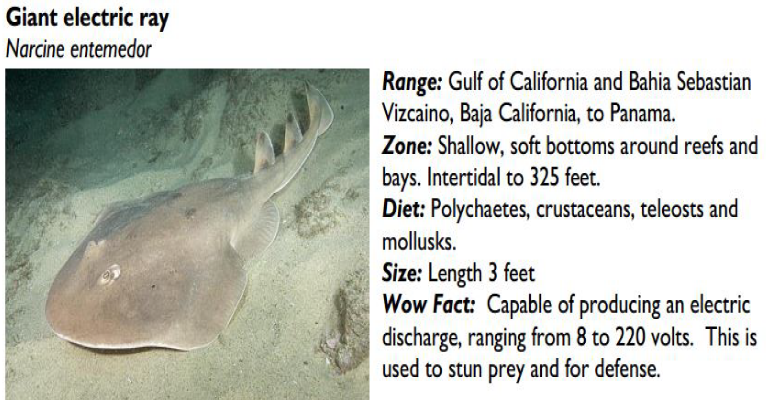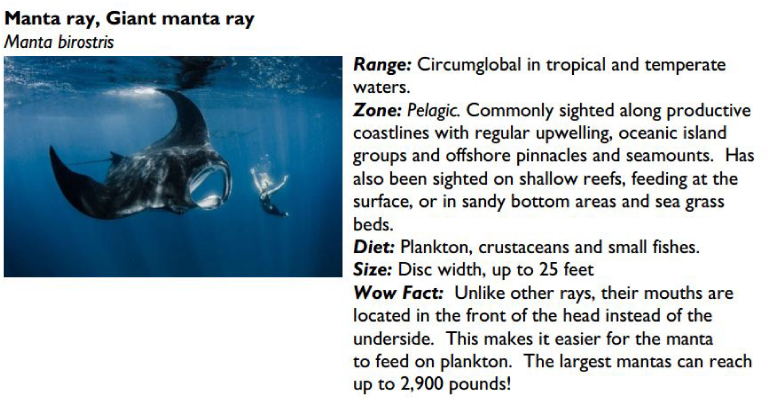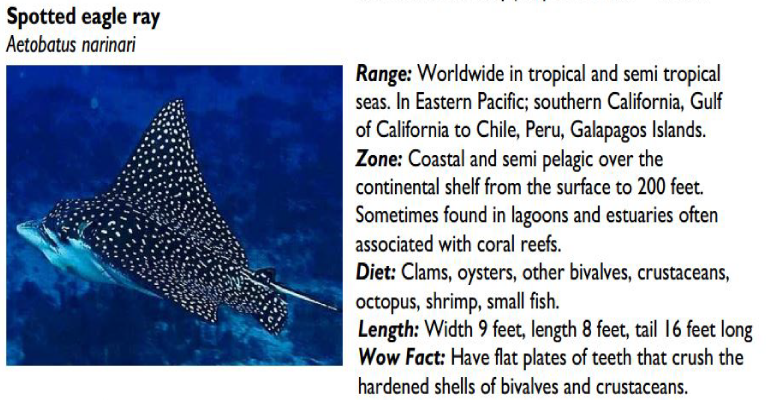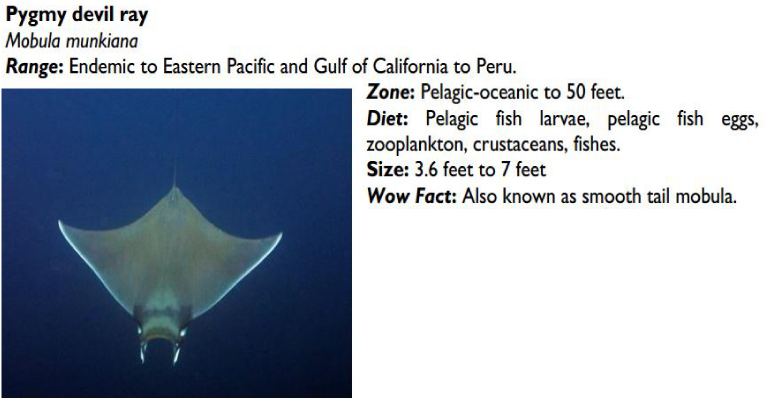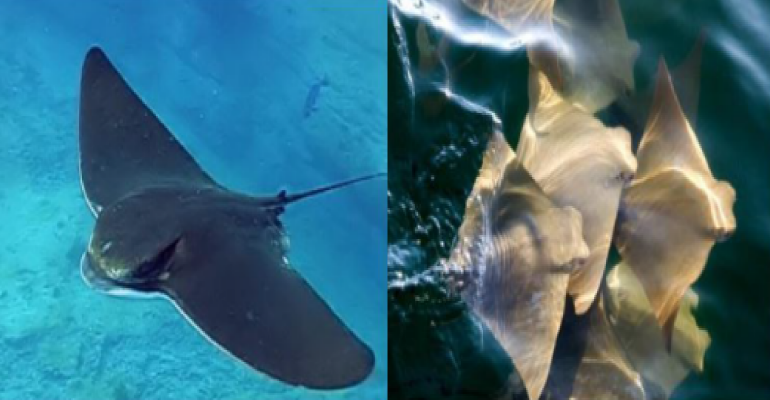
You probably don’t think of stingrays when visiting the desert. However, several species of stingrays inhabit the Gulf of California which is part of the Sonoran Desert. Last October, the Arizona Sonora Desert Museum opened a new exhibit featuring cownose stingrays. At the Museum, the stingers have been clipped. The exhibit allows the sting rays to touch you (rather than you touching the rays). They feel like wet velvet. The skin of a ray is covered by tooth-like structures (called dermal denticles) instead of scales like fish.
Rays are bottom feeders. “Besides gills, rays have an extra adaptation to help them breathe while resting on the bottom of the ocean. These special openings, which are near their eyes, are called spiracles. Instead of sucking sandy water in through their gills, they can pull clear water in through their spiracles. They then push the water out through their gill slits.” (ASDM)
Stingrays (skates and ratfishes) are close relatives of sharks and evolved from sharks about 200 million years ago during the Jurassic Period. Like sharks, rays have a cartilaginous skeleton rather than hard bones. In rays, the front fins have expanded around the head to form a pectoral disk that act like wings. Most rays are marine animals, but some have evolved to tolerate brackish and fresh water.
Differences between bony fish and rays (info from Arizona Sonora Desert Museum):
Bony fish have a bony skeleton, overlapping ganoid, cycloid or ctenoid scales, a gill opening covered by a bony plate called an operculum, flexible pectoral fins, a swim bladder and internal fertilization. The operculum allows fish to actively pump water over their gills. Having flexible pectoral fins made up of fin rays allow bony fish to be more maneuverable, navigate tight spaces, and the ability to turn around. A swim bladder is a gas filled organ that helps control the buoyancy of a bony fish.
Sharks and rays a cartilaginous skeleton, tooth-like scales called dermal denticles or placoid scales, five to seven pairs of gill slits, no swim bladder, very large liver, fixed pectoral fins, spiral valve intestine, specialized electroreceptors called the ampullae of Lorenzini, and internal fertilization. Since cartilaginous fish lack a swim bladder for buoyancy, they have a significantly enlarged liver filled with oil called squalene that helps them float.
The following photos and information, from the Arizona Desert Museum, shows the rays which inhabit the Gulf of California. Visit the museum and be touched by a ray.
Note to readers:
Index with links to all my ADI articles: http://wp.me/P3SUNp-1pi
My comprehensive 28-page essay on climate change: http://wp.me/P3SUNp-1bq
A shorter ADI version is at https://arizonadailyindependent.com/2013/08/01/climate-change-in-perspective/

